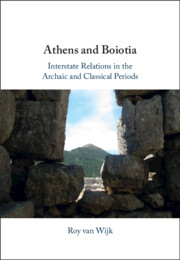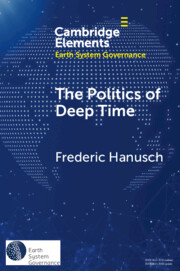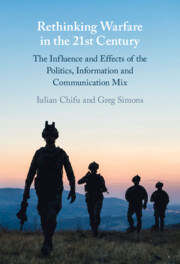117 results
Diasporic geopolitics, rising powers, and the future of international order
-
- Journal:
- Review of International Studies / Volume 50 / Issue 3 / May 2024
- Published online by Cambridge University Press:
- 06 May 2024, pp. 476-493
- Print publication:
- May 2024
-
- Article
-
- You have access
- Open access
- HTML
- Export citation
4 - Do Fences Make for Better Neighbours?
-
- Book:
- Athens and Boiotia
- Published online:
- 29 February 2024
- Print publication:
- 25 January 2024, pp 172-278
-
- Chapter
-
- You have access
- Open access
- HTML
- Export citation

Athens and Boiotia
- Interstate Relations in the Archaic and Classical Periods
-
- Published online:
- 29 February 2024
- Print publication:
- 25 January 2024
-
- Book
-
- You have access
- Open access
- Export citation
1 - Introduction
-
- Book:
- Athens and Boiotia
- Published online:
- 29 February 2024
- Print publication:
- 25 January 2024, pp 1-11
-
- Chapter
-
- You have access
- Open access
- HTML
- Export citation
11 - Rural versus Urban
- from Part III - Dynamics of the Transition
-
- Book:
- Dynamic Sustainability
- Published online:
- 07 December 2023
- Print publication:
- 21 December 2023, pp 164-170
-
- Chapter
- Export citation
1 - Introduction
-
-
- Book:
- Public and Private Governance of Cybersecurity
- Published online:
- 09 November 2023
- Print publication:
- 23 November 2023, pp 1-11
-
- Chapter
- Export citation
10 - The Geopolitical Divide, Norm Conflict, and Public–Private Partnership in Cybersecurity Governance
-
-
- Book:
- Public and Private Governance of Cybersecurity
- Published online:
- 09 November 2023
- Print publication:
- 23 November 2023, pp 240-264
-
- Chapter
- Export citation
4 - Cybercrime, the United Nations, Prospects, and Challenges for International Co-operation
-
-
- Book:
- Public and Private Governance of Cybersecurity
- Published online:
- 09 November 2023
- Print publication:
- 23 November 2023, pp 69-102
-
- Chapter
- Export citation

The Politics of Deep Time
-
- Published online:
- 13 November 2023
- Print publication:
- 07 December 2023
-
- Element
-
- You have access
- Open access
- HTML
- Export citation
5 - Anti-Imperial Popular Sovereignty and the Politics of Transnational Solidarity
- from Part III - Anti-Imperial Popular Sovereignty
-
- Book:
- Democracy and Empire
- Published online:
- 24 August 2023
- Print publication:
- 07 September 2023, pp 169-192
-
- Chapter
-
- You have access
- Open access
- HTML
- Export citation
Arctic science diplomacy in new geopolitical conditions: From “soft” power to “hard” dialogue?
-
- Journal:
- Polar Record / Volume 59 / 2023
- Published online by Cambridge University Press:
- 19 July 2023, e23
-
- Article
- Export citation
9 - Geopolitics in the Age of Social Media: The Struggle for Influence on Ukraine
-
-
- Book:
- Rethinking Warfare in the 21st Century
- Published online:
- 29 June 2023
- Print publication:
- 13 July 2023, pp 246-272
-
- Chapter
- Export citation
6 - Different Shades of Information and Communication in Armed Conflict: White, Grey and Black
-
-
- Book:
- Rethinking Warfare in the 21st Century
- Published online:
- 29 June 2023
- Print publication:
- 13 July 2023, pp 143-183
-
- Chapter
- Export citation
In search of Paulus Vladimiri: Canon, reception, and the (in)conceivability of an Eastern European ‘founding father’ of international law
-
- Journal:
- Leiden Journal of International Law / Volume 36 / Issue 4 / December 2023
- Published online by Cambridge University Press:
- 29 June 2023, pp. 833-855
- Print publication:
- December 2023
-
- Article
-
- You have access
- Open access
- HTML
- Export citation

Rethinking Warfare in the 21st Century
- The Influence and Effects of the Politics, Information and Communication Mix
-
- Published online:
- 29 June 2023
- Print publication:
- 13 July 2023
6 - Fueling Authoritarian Resilience
- from Part III - The Impact of Contemporary Rents on Dictatorship and Violence
-
- Book:
- Conquests and Rents
- Published online:
- 01 June 2023
- Print publication:
- 15 June 2023, pp 179-205
-
- Chapter
- Export citation
12 - Empires Collaborate
- from Part IV - The Singapore and Hong Kong Exceptions
-
-
- Book:
- Regime Type and Beyond
- Published online:
- 25 May 2023
- Print publication:
- 08 June 2023, pp 291-315
-
- Chapter
- Export citation
14 - Common Ownership by Investment Management Corporations and EU Policies
- from Part IV - Beyond the Boundaries of the Corporation
-
-
- Book:
- Intersections Between Corporate and Antitrust Law
- Published online:
- 25 May 2023
- Print publication:
- 08 June 2023, pp 265-286
-
- Chapter
-
- You have access
- Open access
- HTML
- Export citation
1 - Introduction: The Problems of Polar History
-
-
- Book:
- The Cambridge History of the Polar Regions
- Published online:
- 24 March 2023
- Print publication:
- 11 May 2023, pp 1-31
-
- Chapter
- Export citation
13 - Britain’s Polar Empire, 1769–1982
-
-
- Book:
- The Cambridge History of the Polar Regions
- Published online:
- 24 March 2023
- Print publication:
- 11 May 2023, pp 302-324
-
- Chapter
- Export citation



